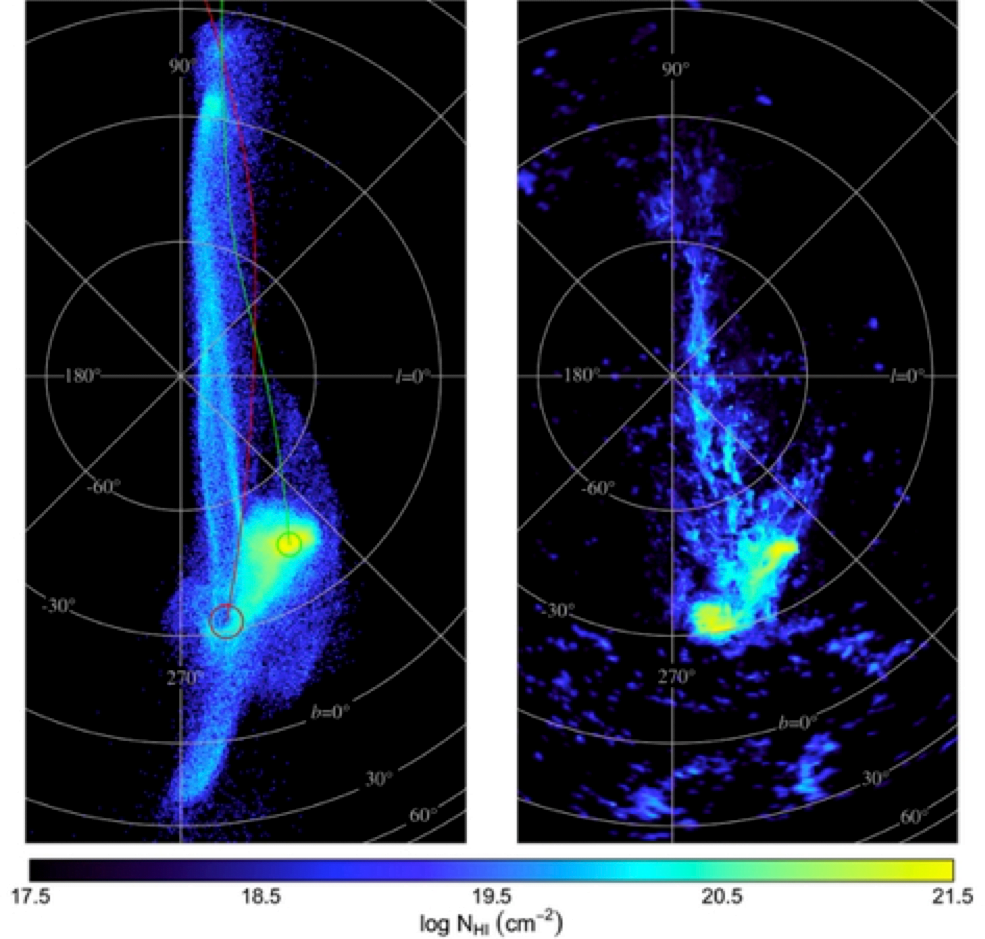A new multi-scale simulation of globular cluster formation with multiple stellar populations
Globular clusters (GCs) are very old components (as old as 10-12 Gyr) of the Galaxy and thus have long being considered to have fossil records of the Galaxy formation. Galaxies other than the Galaxy are observed to have GCs, and the numbers, spatial distributions, colors, and kinematics of GCs are quite different between different host galaxies. Furthermore, the physical properties of GC systems (GCSs) in their galaxies correlate with those of their hosts.
Until recently, GCs had been considered to have only one generation of stars (i.e., `single stellar population’; all stars were formed simultaneously). However, recent observations have revealed that stars in GCs have different chemical abundances (e.g., C, N, and O), which imply that GC stars were formed in multiple epochs of stars formation (`multiple stellar populations’): Figure shows an example of GCs with multiple stellar populations (Omega Centauri). It is totally unknown how such GCs with multiple stellar populations were formed from gas clouds in the very early history of the Galaxy. A new theory needs to be constructed to understand the origin of GCs.
In this PhD project, PhD students perform numerical simulations of GC formation in high-z dwarf disk galaxies so that they can reveal the formation process of GCs in the early universe. Chemical and dynamical evolution of star-forming giant molecular clouds are modeled in a self-consistent manner so that chemical abundances, stellar distributions, and stellar kinematics can be predicted for comparison with observations in this project. The main goal of this project is to understand (i) the origin of multiple stellar populations of GCs, (ii) relationships between physical properties of GCs and those of stellar galactic nuclei in dwarf galaxies, (iii) origin of the Galactic GCs, (iv) correlations between physical properties of GCSs (e.g., mean colors, specific frequencies, and kinematics) and those of galaxies (e.g., luminosities and Hubble types), and (v) GC formation at high redshifts. Computer simulations will be carried out on the latest clusters of GPU machines at ICRAR.
Simulating the Magellanic systems for 4MOST
The Large and Small Magellanic Clouds (LMC and SMC, respectively) are the nearest interacting pair of galaxies and their physical properties have been observed in great detail. However the origins of the two galaxies are poorly understood. In this project, a number of key unresolved problems related to the LMC and the SMC are explored using fully self-consistent numerical simulations with star formation and gas dynamics. In particular, the formation processes of the Magellanic Stream, star formation histories of the LMC and the SMC, hydrodynamical interaction between the Clouds and the Galactic gaseous halo, and formation of molecular clouds in the Clouds are extensively investigated by numerical simulations. The results are compared with the corresponding observations obtained by radio and optical telescopes here in Australia.

